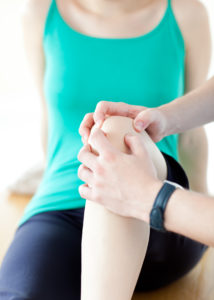Any time someone undergoes surgery whether arthroscopic, minimally invasive, or otherwise, proper post-surgery rehab is a must. Many think, I can just walk it off or I can do it myself. How wrong those individuals are. Worst, some of this message is passed down from a surgeon.
While a surgery may be sold as “SMALL”, it is still surgery and your body knows something was done to it. Soft tissue was cut through, muscles were cut/pulled or sewed back up. Maybe pins, screws or rods were inserted to “fix” the “problem”. And the body is supposed to heal itself 100% without some guidance? So you are just good as new? REALLY?
In most instances, one must be patient with the early phase(s) of recovery. The surgeon and/or physical therapist together will help guide and/or restrict function/motion to help promote proper early healing. See soft tissues and muscles take 6-10 weeks to heal while bone takes 8-12 weeks for most normal adults under ideal circumstances. Now throw in comorbidities such as diabetes, heart or vascular disease and healing takes longer. Have an unhealthy diet or smoke, increase healing time even more. This does not even account for age of the patient which also tends to increase healing time. These variables are often not discussed or considered, but are highly important in the healing process.
While it may be possible to regain most of your range of motion on your own, the “end” ranges are often difficult to achieve by ones’ self, and may be quite crucial for work, sport, or even daily function. This is where focused joint mobilization and stretching by a skilled physical therapist can help one attain full mobility.
Regaining strength takes time and effort. Muscle atrophy happens very quickly with post-surgical immobilization (inside of 2 weeks), and can take weeks or months to regain even with proper training. The message here though is in many cases true strength training must be delayed by a few weeks post surgery to allow the tissues to heal if they were repaired. Again, this is where guidance of skilled health professionals is necessary. Quick aside here… I had surgery on my ankle and was in a soft splint for 2 weeks. It then took 6-8 months for my calves to be the same size again from the atrophy in just 2 weeks. And this was working it at least 5 days per week with good nutrition and I was only 30 yrs old at the time.
A final piece of the puzzle that must be addressed and is extremely difficult without proper guidance is redeveloping neuromuscular or balance control. These are skills that must be specifically trained and do not automatically return. Training in this domain is where skilled physical therapists are a huge benefit for patients. We are able to observe these deficits and create a patient specific plan to address and overcome.
Does trying to speed up the rehab process help? Depending on what the individual is attempting to accomplish, one may put the surgical repair at risk for failure or be at increased risk of a secondary injury. A high volume of research is starting to report findings that even 1-year following ACL surgery or 2-years following knee or hip replacement significant deficits remain. With ACLs it is often the neuromuscular domain, while with joint replacements it is often strength or gait issues. Given these findings, researchers are suggesting greater effort should be placed on the necessary domains for the patient.
A final suggestion is when you feel you are done, more work still needs to happen to achieve maximum function.
Want to learn more how physical therapy can help you recover from your surgery? To get you back to your activities faster and safer? Simply call me at 717-440-6197 or email me at andrew@zangpt.com
